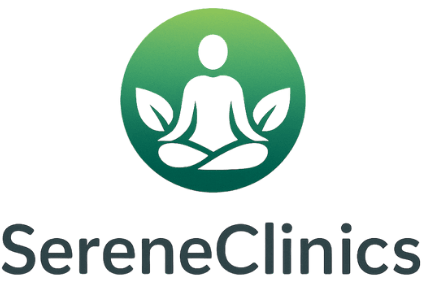Homeopathic Approaches to Musculoskeletal Pain
Are you tired of musculoskeletal pain slowing you down? Homeopathy offers effective solutions, especially for sports injuries, through natural first aid remedies. By exploring remedies like Arnica montana and Hypericum perforatum, you can find the perfect remedy match for your needs. This article explores how homeopathic methods can work alongside physical therapy, offering a complete way to heal and feel better. Learn how homeopathy can help with pain relief and improve your health.
Key Takeaways:
Contents
- 1 Understanding Musculoskeletal Pain
- 2 Principles of Homeopathic Treatment
- 3 Homeopathic Remedies for Musculoskeletal Pain
- 4 Case Studies and Evidence
- 5 Homeopathy and Musculoskeletal Pain Efficacy
- 6 Integrating Homeopathy with Conventional Treatments
- 7 Potential Risks and Considerations
- 8 Frequently Asked Questions
- 8.1 1. What is the concept behind using homeopathic approaches for musculoskeletal pain?
- 8.2 2. Can homeopathic remedies be used for all types of musculoskeletal pain?
- 8.3 3. Are homeopathic remedies safe to use for musculoskeletal pain?
- 8.4 4. How long does it take for homeopathic remedies to work for musculoskeletal pain?
- 8.5 5. Do homeopathic remedies have any side effects?
- 8.6 6. Can homeopathic remedies be used alongside conventional treatments for musculoskeletal pain?
Definition of Homeopathy

Homeopathy is based on the principle that ‘like cures like,’ utilizing highly diluted substances to trigger the body’s natural healing processes.
This approach hinges on the ‘law of similars,’ meaning a substance causing symptoms in a healthy person can treat those same symptoms in a sick person.
Homeopathic treatments match a person’s specific symptoms instead of giving all patients the same medicine. For instance, someone experiencing anxiety may benefit from a remedy like Aconite, while another with chronic fatigue might find relief from Arsenicum album.
Patients can consider choices by using services such as Homeopathy Online or speaking with local practitioners who focus on personal care. For context, an in-depth analysis by Wikipedia explores the evidence and efficacy of homeopathy, providing valuable insights into both its potentials and limitations.
History of Homeopathy
Developed by Samuel Hahnemann in the late 18th century, homeopathy has evolved significantly, gaining traction as a respected alternative medical practice in various cultures.
In 1796, Hahnemann published his foundational work, “Organon of Medicine,” outlining the principle of “like cures like.” To understand this principle better, a [deep dive into various examples of ‘like cures like’ in homeopathy](https://sereneclinics.com/holistic-health/holistic-medicine/homeopathy/homeopathy-like-cures/) provides valuable insights. By the mid-19th century, homeopathy had spread to Europe and the Americas, with notable figures such as Dr. Constantine Hering promoting its practice.
The establishment of homeopathic hospitals in the United States around 1850 further solidified its influence. By the late 20th century, organizations like the World Health Organization began recognizing homeopathy as a complementary therapy.
Today, homeopathic treatments are used worldwide, with countries like India incorporating them into their national healthcare systems. A thoughtful exploration on this topic can be found in ScienceDirect’s discussion of the development of homeopathy in India.
Understanding Musculoskeletal Pain
Musculoskeletal pain is a common problem impacting millions of people.
It often arises from injuries, too much physical activity, or long-term health conditions, requiring effective treatment methods for healing. This aligns with insights from the World Health Organization, which highlights the widespread impact of musculoskeletal conditions and emphasizes the importance of addressing them properly. For those exploring alternative treatments, acupuncture offers pain relief with techniques that have been shown to be effective.
Types of Musculoskeletal Pain
Musculoskeletal pain can be categorized into acute and chronic types, with acute pain arising suddenly and chronic pain developing over time due to ongoing stress or injury.
Acute pain is usually intense and brief, often resulting from injuries such as sprains or fractures. Common conditions include tendonitis and bursitis.
In contrast, chronic pain persists for three months or longer and can stem from underlying issues like arthritis or fibromyalgia. Knowing the difference is essential for treatment: acute pain may require rest and ice, while chronic pain often calls for a detailed exercise plan, physical therapy, and methods to control pain.
This differentiation directly influences the choice of therapeutic approaches and interventions.
Common Causes and Conditions
Common causes of muscle and joint pain include sports injuries, repetitive strain, and conditions like arthritis, showing the need for specific treatment methods.
For instance, tendonitis may require rest, ice, and anti-inflammatory medications, while osteoarthritis management often involves exercises to strengthen surrounding muscles.
Homeopathy can complement these treatments; Arnica montana might be effective for bruising and pain, while Rhus toxicodendron may help relieve stiffness.
You should talk to a doctor to adjust the plan based on how serious it is and how each person responds. Using these methods together can create a more complete and successful management plan for musculoskeletal pain.
Principles of Homeopathic Treatment
Homeopathic treatment follows particular rules to help practitioners select individual remedies that support the body’s healing process, as outlined in our detailed guide on Homeopathy: Principles, Practices, and Evidence-Based Integration.
Law of Similars
The law of similars posits that substances causing symptoms in healthy individuals can cure similar symptoms in sick individuals, a foundational concept in homeopathy.
Eating an onion can make a person with hay fever’s eyes water, which might lessen their symptoms.
Another instance is using coffee to combat insomnia; while it causes jitteriness in healthy individuals, in homeopathic doses, it can help reduce restlessness.
Practitioners often use Belladonna for treating fevers. They do this because Belladonna causes similar symptoms in healthy individuals, helping to bring the body back to normal.
This principle allows homeopaths to tailor treatments based on specific symptom presentations.
Individualization of Treatment
In homeopathy, treatment is customized by examining each patient’s unique symptoms and personal circumstances to determine the most suitable remedy.
For instance, two patients with migraines may both experience throbbing headaches but respond to different treatments. Patient A, whose migraines are triggered by stress, might benefit from Natrum muriaticum, which addresses emotional factors.
In contrast, Patient B, whose symptoms are linked to hormonal changes, could find relief with Sepia. It’s important to assess symptoms, lifestyle, triggers, and emotions.
Homeopaths collect detailed personal histories and use questionnaires to gather information, allowing them to create a plan specific to each person’s needs.
Dilution and Succussion

Dilution and succussion are essential steps in homeopathy. In these processes, remedies are repeatedly watered down and shaken to improve their healing qualities.
The rationale behind dilution is based on the belief that the more a substance is diluted, the more potent it becomes, though there may be little to no molecular presence of the original substance left.
Shaking a solution strongly is thought to activate energy, increasing the remedy’s effectiveness.
For example, a common preparation might involve 30 dilutions (known as 30C), where a single drop is added to 99 drops of water, then shaken each time.
This method is important for practitioners who want to make sure that the solutions are safe and effective.
Homeopathic Remedies for Musculoskeletal Pain
Different homeopathic treatments are available for muscle and joint pain. Each is chosen based on the person’s specific symptoms and the type of injury. For those interested in a deeper understanding of the methodologies behind these treatments, you might appreciate our comprehensive overview of Homeopathy: Principles, Practices, and Evidence-Based Applications.
Commonly Used Remedies
Common homeopathic remedies for musculoskeletal pain include Arnica montana for bruising, Hypericum perforatum for nerve pain, and Rhus toxicodendron for stiffness.
To effectively use these remedies, consider the following guidelines.
- For Arnica montana, take 30C potency and administer three doses daily after injury for two days; it helps reduce swelling and pain.
- Hypericum perforatum, best at 30C, treats shooting pains and is useful for nerve injuries; take it three times daily until symptoms improve.
- Rhus toxicodendron, often recommended in 30C, alleviates stiffness, especially when symptoms worsen after rest.
Always consult a healthcare professional before starting any regimen.
Choosing the Right Remedy
Selecting a homeopathic treatment requires a thorough review of symptoms and personal conditions, usually with help from a homeopathy specialist.
This assessment typically includes a thorough health history and an analysis of both physical and emotional symptoms.
For instance, a homeopathic expert may suggest remedies like Arsenicum album for anxiety with restlessness or Pulsatilla for moodiness and changeable symptoms.
Patients should also consider their personal sensitivities and existing health conditions when selecting remedies. Writing down symptoms regularly can show patterns, helping find a remedy that works best, which improves the treatment’s success.
Dosage and Administration
How much and how often you take homeopathic remedies is important for them to work well, and is usually based on how bad the symptoms are and how the patient reacts.
As an example, Arnica montana, commonly used for bruises, can be taken at a 30C dosage every few hours for severe pain, or less frequently if the pain is mild.
It’s important to monitor improvements; if no relief is seen after 24 hours, consider adjusting dosage or switching remedies.
Tools like homeopathic dose calculators can help figure out starting doses based on individual symptoms.
Always talk to an experienced professional to make sure it’s safe and works well for your specific needs.
Case Studies and Evidence
Looking at case studies and clinical tests gives useful information about how well homeopathy works for treating muscle and bone pain, showing actual results.
Homeopathy and Musculoskeletal Pain Efficacy
Homeopathy and Musculoskeletal Pain Efficacy
Clinical Trials for Musculoskeletal Disorders: Trial Outcomes
The data on Homeopathy and Musculoskeletal Pain Efficacy gives information on how well homeopathic treatments work for musculoskeletal disorders based on clinical trials and surveys. Grasping these results is important for assessing homeopathy’s part in managing pain and how it might affect patient care.
Clinical Trials for Musculoskeletal Disorders reveal a nuanced picture. 55.6% of trials reported positive results, suggesting a favorable response to homeopathic treatments in more than half of the cases. However, 44.4% of trials reported negative results, indicating inconsistency in efficacy across different studies. This mixed outcome highlights the variability in homeopathic treatment effectiveness, possibly due to differences in trial design, participant characteristics, or specific homeopathic interventions used.
- General Practitioner Consultations: 10% of consultations are for musculoskeletal complaints, signifying a substantial demand for effective pain management solutions, including potential alternative therapies like homeopathy.
- Incapacity Claims: In Great Britain, 20% of incapacity claims are due to musculoskeletal disorders, underscoring the significant impact of these conditions on work and daily life, and highlighting the need for sustainable treatment options.
- Liverpool Survey Improvements: Survey data indicates varying improvements among patients: 61.4% in osteoarthritis, 53% in spinal pain, and 56.5% in inflammatory arthritis. These figures suggest that certain musculoskeletal conditions respond better to homeopathy, though results can differ based on the type of disorder.
The variability in clinical trial results and survey data suggests that while homeopathy shows promise for some patients, it may not be universally effective for all musculoskeletal conditions. The varied progress in conditions such as osteoarthritis, spinal pain, and inflammatory arthritis underscores the need for personalized treatment plans.
Overall, the data on Homeopathy and Musculoskeletal Pain Efficacy Talks about the difficulties in treating pain and the need for continued studies to improve homeopathic approaches and improve outcomes for people with muscle and bone issues.
Successful Treatment Examples

Many successful treatment cases show that homeopathic remedies work well and have long-lasting effects in reducing musculoskeletal pain.
For instance, a 45-year-old woman with chronic lower back pain reported significant relief after a homeopathic regimen involving Rhus Toxicodendron and Arnica Montana over three months. She experienced improved mobility and a notable reduction in pain levels.
Another case involved a 62-year-old man with arthritis in his knees, who got better with a treatment plan that included Bryonia and Calcarea Carbonica, resulting in less swelling and improved function.
Both examples show how homeopathy uses a custom method, concentrating on each person’s specific symptoms and needs to improve their chances of getting better.
Research and Clinical Trials
Studies and clinical trials have looked into how well homeopathy works, with reviews showing mixed but hopeful findings.
A study published in the British Journal of Sports Medicine examined multiple randomized controlled trials and found that homeopathic treatments, particularly Arnica montana for bruising and muscle soreness, were effective.
Combining homeopathy with standard medical treatments can improve patient comfort and help manage pain. The quality of the studies varies, emphasizing the need for well-designed trials.
Tools like the Cochrane Library can help practitioners access these reviews, ensuring informed decisions regarding treatment plans for musculoskeletal pain.
Integrating Homeopathy with Conventional Treatments
Combining homeopathy with traditional treatments can offer a well-rounded method for dealing with muscle and joint pain, improving patient care. Understanding the principles and practices of homeopathy can provide further insights into its integration with conventional therapies.
Complementary Approaches
Using different methods to manage injuries can improve patient outcomes. Homeopathy can be useful when used with standard treatments.
Integrating physical therapy with homeopathic treatments can address both symptom relief and overall function. For example, a patient recovering from a sprain might undergo targeted physical therapy to improve range of motion while using Arnica montana to reduce swelling.
Nutritional support, such as increasing omega-3 fatty acids, can also complement this approach by reducing inflammation. Tools like MyFitnessPal can help track dietary changes, ensuring complete care.
Using these approaches together, patients might recover faster and feel better overall.
Consultation with Healthcare Providers
Talking with healthcare professionals makes sure patients get well-rounded care that includes homeopathy in their treatment plan.
To facilitate meaningful conversations about homeopathic treatments, patients should approach their healthcare providers with specific questions.
Start by preparing a list of symptoms and how they have responded to homeopathy, noting any changes after treatment. Use tools like health journals or symptom trackers to provide clear information.
Be open to discussing possible interactions between homeopathic remedies and conventional medications. Ask for advice on how much to use and when to use each method for better results by working together.
Potential Risks and Considerations
Although homeopathy is usually seen as safe, it’s important to know about possible risks and factors for careful patient treatment.
Understanding Limitations
Homeopathy has limitations, including its reliance on individualized responses and the need for thorough patient evaluations to maximize efficacy.
For example, homeopathy might not be the right choice for urgent problems like appendicitis or serious infections, which need quick treatment with standard medical care.
Chronic diseases like diabetes usually require detailed treatment plans that include lifestyle modifications, proper diet, and medication instead of relying solely on homeopathic remedies.
Therefore, patients should always consider looking at all treatment options. Talking to healthcare experts can help make sure the chosen treatment fits the person’s health needs and situation.
Side Effects and Interactions
While homeopathic remedies usually have few side effects, it’s important to think about how they might interact with other medications and health conditions.
For example, remedies like Arnica montana might interact with anticoagulants, increasing bleeding risk. Users of these treatments should also monitor chronic conditions such as diabetes, as some homeopathic solutions may affect blood sugar levels.
It’s advisable to consult a healthcare practitioner to review your current medications, ensuring they do not adversely impact one another.
Tracking your reactions in a journal post-treatment can further help both you and your healthcare provider adjust any ongoing therapies safely.
Future of Homeopathy in Pain Management

New developments in healthcare show that more people are becoming open to homeopathy, especially as they look for whole-body and natural ways to treat conditions.
Researchers are working on ways to combine homeopathy with regular medicine.
For instance, controlled clinical trials are being designed to assess the efficacy of homeopathic treatments, targeting specific ailments like allergies and chronic pain management. Platforms like ResearchGate and ClinicalTrials.gov can help facilitate collaboration and transparency in ongoing studies.
Universities are including homeopathic methods in their courses, allowing upcoming healthcare workers to learn and use these techniques. This confluence of research and education will likely pave the way for more widespread acceptance.
Frequently Asked Questions
1. What is the concept behind using homeopathic approaches for musculoskeletal pain?
Homeopathy is a type of medicine that relies on the body’s power to recover on its own. Homeopathic remedies work by stimulating the body’s natural healing mechanisms, rather than just masking the symptoms of pain.
2. Can homeopathic remedies be used for all types of musculoskeletal pain?
Yes, homeopathic approaches can be used for various types of musculoskeletal pain, including arthritis, back pain, joint pain, and fibromyalgia. However, the exact treatment and amount can differ based on the person’s symptoms and general health.
3. Are homeopathic remedies safe to use for musculoskeletal pain?
Yes, homeopathic remedies are generally considered safe to use for musculoskeletal pain. They are made from natural substances and do not contain harmful chemicals or additives.
4. How long does it take for homeopathic remedies to work for musculoskeletal pain?
The duration of treatment with homeopathic remedies may vary from person to person. Some people might feel better in a few hours or days, but it might take longer for others, depending on how bad and how long the pain has been.
5. Do homeopathic remedies have any side effects?
Homeopathic remedies are considered safe and usually do not have any side effects. However, some people may feel worse pain or symptoms for a short time before feeling better. This is a normal response and is a sign that the remedy is working.
6. Can homeopathic remedies be used alongside conventional treatments for musculoskeletal pain?
Yes, homeopathic approaches can be used alongside conventional treatments for musculoskeletal pain. Before mixing various treatments, you should talk to a certified homeopath or healthcare professional.

Sheetal Sharda has a background in CS. She got an interest in Holistic living back in 2018, and has since started exploring more into Naturapathy, Holistic Living, Yoga, and more. She got inspired to start SereneClinics to help people find reliable centers across the world.




